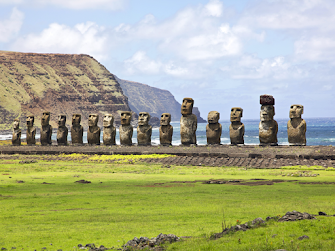Money Making Apps by Watching Videos – Apps to watch videos and earn money. There are many ways to make money in this online world, one of them is by trying applications on Android and iPhone.
Of course, we know today that there are plenty of money-making apps that can prove to be useful. Each gives free money to members who complete tasks.
One of the tasks offered is to watch YouTube videos or advertisements. Yes, you can make money just by watching videos.
Of course, this method is very interesting, especially for those of us who like to watch videos and movies. In your spare time, you can use this app to earn extra income while enjoying entertainment.
List of Money Making Apps by Watching Videos
Let's take a look at the complete list of money-making applications by watching the videos, without any more hassle. Check out the full discussion in the instructions below.
1. Funny Go
Funny Go is an app that makes money just by watching viral videos. This application has the potential to be an option to increase money without capital and is proven to be paid for free.
You don't need to make any deposit or fees to earn extra money or income with Funny Go. Basically, all you need to use this application is internet quota.
The work required to make money with Funny Go is also very easy and you will only be asked to watch Korean dramas. Of course, for Korean serial fans, this application can be an application to watch dramas while making money.
2. TikTok
Earning money from TikTok is very easy. You can select the coin button directly in the app. After that, every time you watch a video for 5 minutes, you will get 800 coins, 15 minutes = 2800 coins, 30 minutes = 6000 coins.
TikTok also invites people to use the app to earn IDR 60,000 by creating an account with a referral code. Invite your friends using aliases and referral codes. you can later transfer your payment to your DANA balance.
3. Watch2Earn
Another viral money making app is Watch2Earn. This app can bring us a lot of money every time we watch a video ad without missing the one that appears in the video.
All the videos you watch can later earn you dollars and transfer them to your PayPal account. Therefore, this is not an application to make money without PayPal.
4. YouCubez
YouCubez app allows all users to watch videos and ads and convert them to British pounds. Not only that, of course, this application is also an option for watching videos in your spare time.
Interestingly, users will find it easy to withdraw and withdraw funds. That's because it tells you how to pay the money we want. Please note that videos and ads you watch are eligible for £0.0005 to £0.015.
5. Bay Mack
The next video watching application that is proven to make money and doesn't pay to invite friends is Bay Mack. The BayMack app pays viewers by watching the videos provided.
you can try this alternative app except Swagbucks or Watch2Earn. You don't need to doubt its reliability. You can see that the reviews for this app are very good on the App Store or Play Store.
6. Swagbucks
There are many other apps that give us the opportunity to earn extra income just by watching short videos. Swagbucks is a hot topic in trending.
Swagbucks apk is also for watching reliable and popular video app. The more videos you watch, the longer the video duration and the more income you will earn. Several withdrawal methods are also available, including PayPal.
7. SnackVideo
Another app to make up to hundreds of thousands of dollars a day quickly and easily is SnackVideo. SnackVideo is a short video app that lets you invite friends to make money.
Invite your friends to join in downloading the video snack application using a referral code so you can get Rp. 25,000. Watch SnackVideo videos and complete daily missions like like videos to earn extra money to send to FUNDS.
8. ClipClaps
Another legitimate app you can use is ClipClaps. ClipClaps is also one of the most trusted and legitimate video viewing applications, and many have proven that this application is not a scam.
The more videos we watch, and the longer we watch, the more money and income we can earn. Money from watching short videos on ClipClaps can be transferred to your PayPal, Dana, or GoPay account.
9. Paid2YouTube
Another recommendation is YouTube Paid2. In fact, Paid2YouTube is not an application, but a platform for watching reliable, safe and paid paid short videos.
The YouTube Paid2 site has long been used for online businesses. Please note that the payout for watching videos on Paid2YouTube is very low, around $0.01 per video you watch, not watch time. Payments will only be sent to your PayPal account.




























